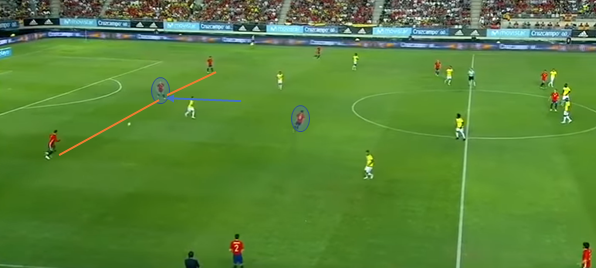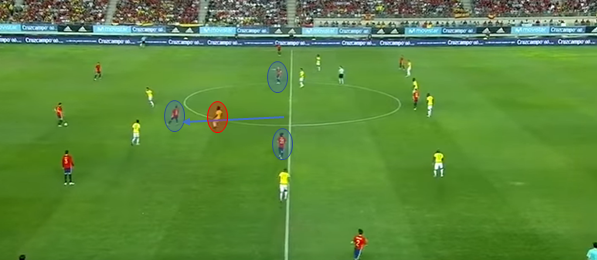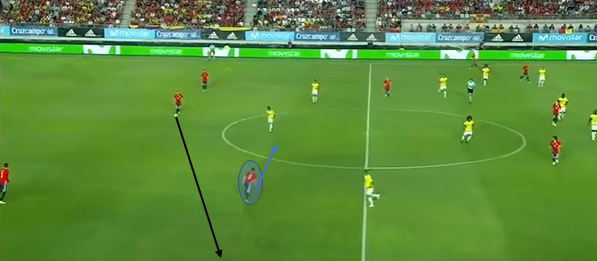By Alex Trukan
Defending in 4-4-2 is relatively simple and provides good organisation and structure. If executed well, it is very hard to break down and attack against. One of the key areas where overloads can be created and players moved out of positions is centre. Here comes a crucial role of central midfielders who can create spaces and disorganise opposition by their clever movement. This article shows couple of examples of how CM’s movement can be used to break down 4-4-2.
First unit to break down vs. 4-4-2 is two strikers. With two centre backs dropping in to receive off the GK it might be tricky to break through as its 2v2 situation. One of the central midfielders dropping into back line (might be in between or around) creates 3v2 situation and naturally provides more width to stretch the opposition front two. Second and third centre midfielders will be positioned higher up the pitch looking for angles to receive beyond forwards unit.

Another type of movement might starting in between opposition’s midfielders to then move towards the ball and drag one of the midfielders out. This creates gaps for two other CM’s who will be looking to receive off centre back in possession.

Finally, another type of movement from CM might be against the movement of the ball. Here, we can see CM moving into central areas as the ball is played into wide areas. This effectively narrows up the opposition shape and gives more time for wide player to receive and drive forwards.

Strength of 4-4-2 lies in organisation and simple structure. This is why, any unconventional movement from central midfielders and playing between the units will cause problems for players defending in 4-4-2. Midfield three should look to play in asymmetrical shapes and be mobile between different lines.
By Alex Trukan, Development Coach, Nottingham Forest - @AlexTrukan


